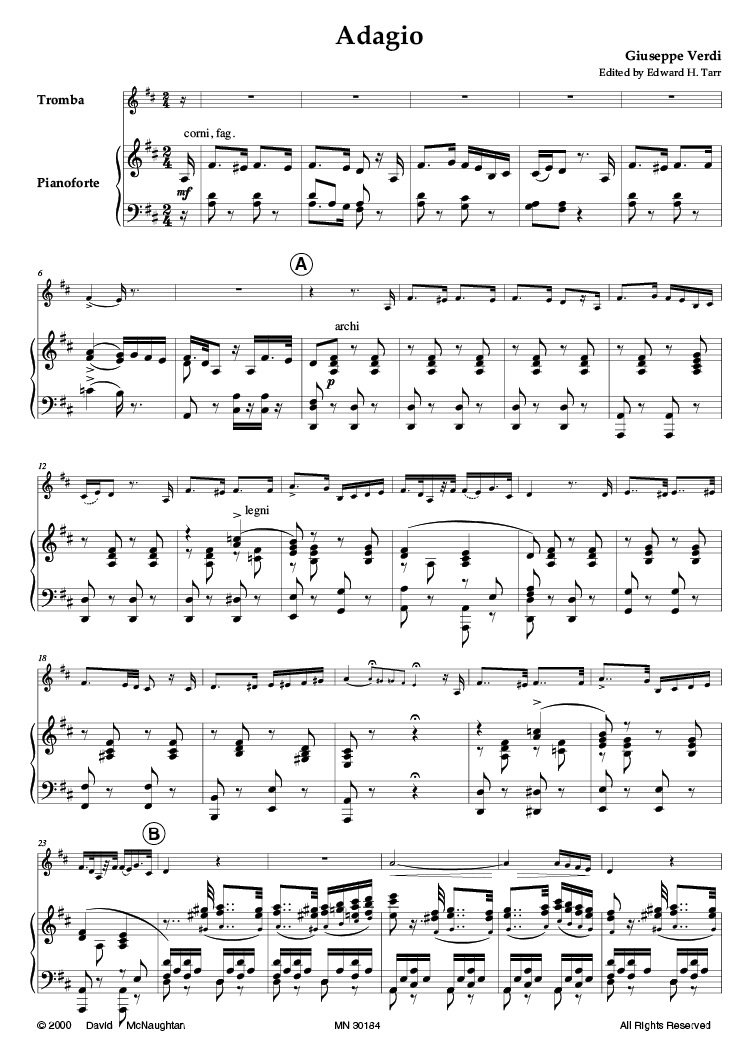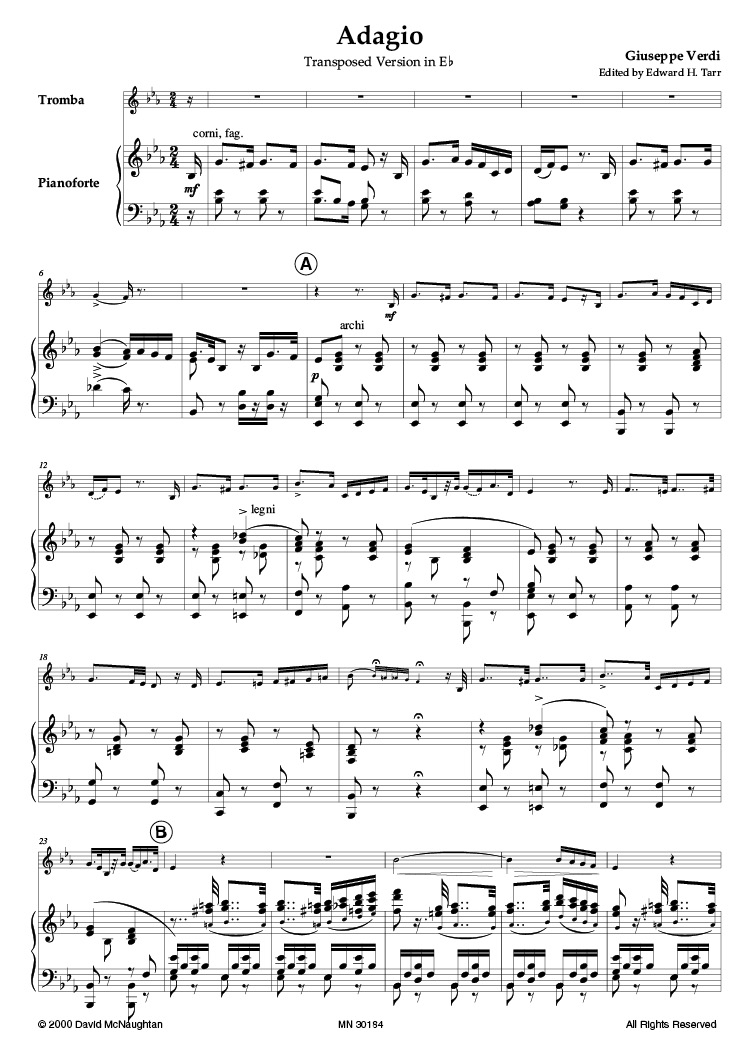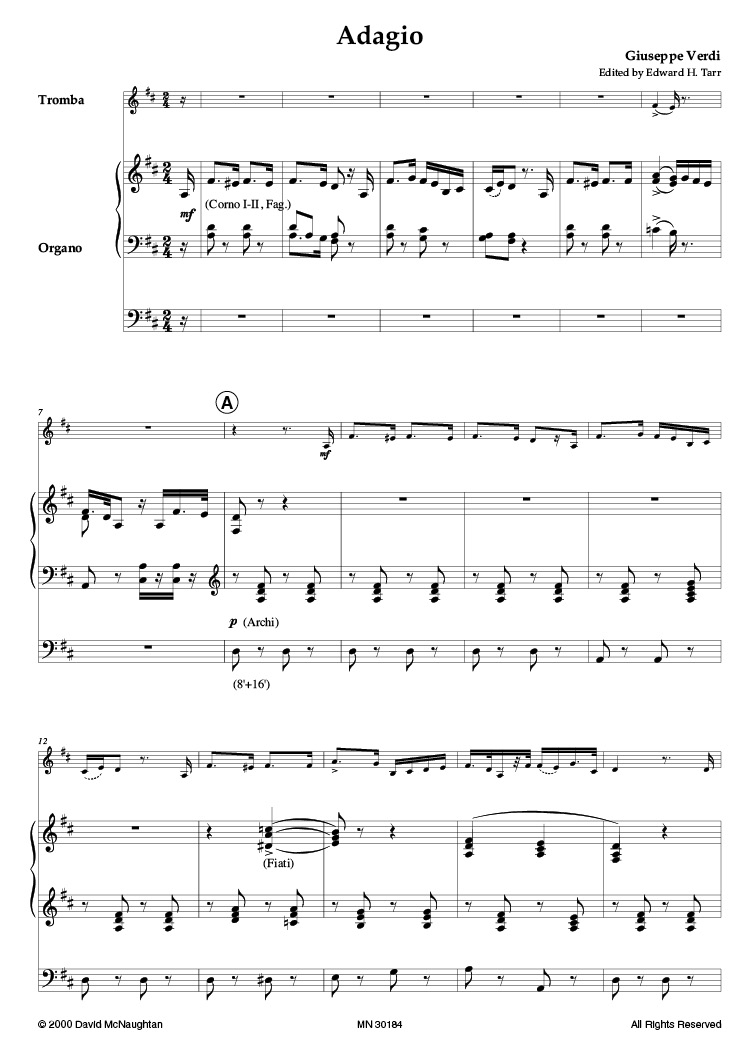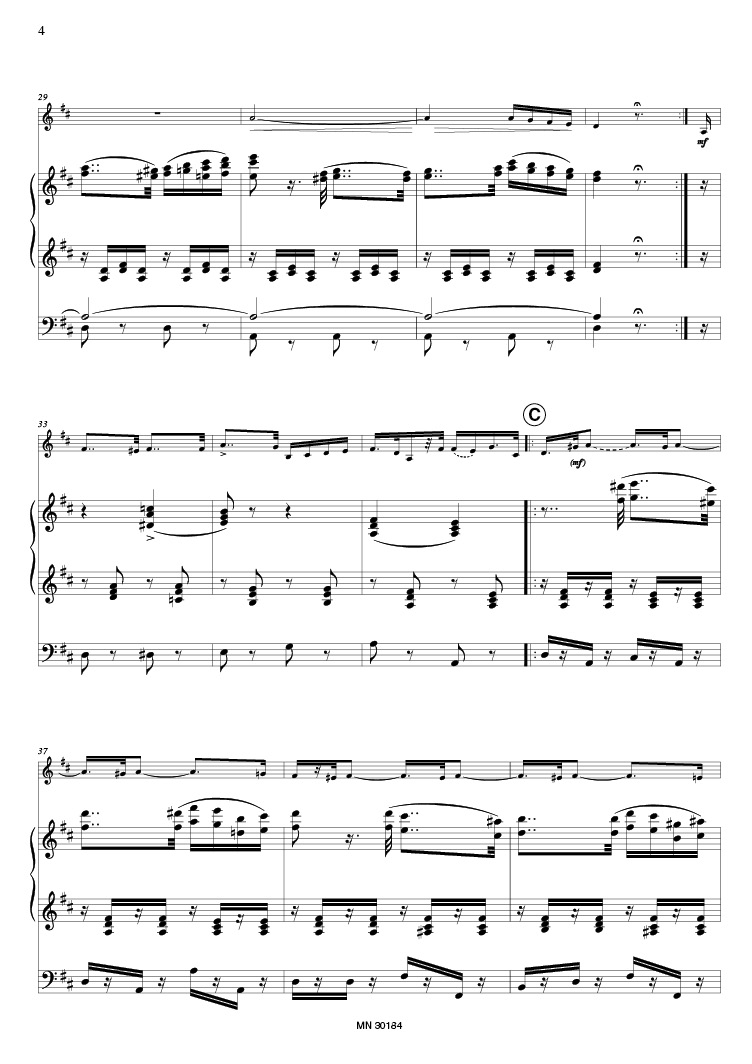
Verdi Adagio
Difficulty (I-VI): IIISolo Parts for:
Trumpet in D and Bb
Horn in F (only MN 30184-5)
Trombone (only MN 30184-5)
Orchestral Parts:
Flute 1+2, Clarinet 1+2 (in Bb), Bassoon, Horn 1+2 (in D)
String Parts included: 8768
Quintet Instrumentation:
Solo Trumpet, Trumpet, Horn in F, Trombone, Tuba
Series: Edward Tarr Brass
Editor: Edward H. Tarr
Verdi's Adagio – an Original Work for Solo Trumpet
Between 1836 and 1839, before he became a celebrated opera composer, young Verdi had the modest position of a maestro di musica in his birthplace Busseto near Parma. Later he destroyed the works he composed for the Filarmonici di Busetto and for the church.
One of these works, however, an "Adaggio" [sic] for solo trumpet and orchestra, survived in the house of Verdi's father-in-law, Barezzi, together with a few other documents. In August, 1999, the Bad Säckingen Trumpet Museum acquired the manuscript orchestral material of this hitherto unknown work, which reminds one strongly of an opera cavatina. (The German premiere took place on February 1, 1997, in the Bad Säckingen cathedral with the Bad Säckingen Orchestral Society conducted by Josef Polyak and with the undersigned as soloist.)
The solo instrument is a trumpet in D. This has nothing to do with today's short D trumpet, but is rather the "Romantic trumpet" an octave lower, the timbre of which – especially in the low register in which it moves – has elements of a horn or of a trombone. A fluegelhorn would probably approach the intended sound more closely than a B-flat trumpet. The edition for Trumpet and Piano (MN 30184) also contains a transposed version in Eb to make it easier for younger players to approach this wonderful piece.
Several programs of concerts given by the Filarmonici di Busseto have survived in which one Pietro Garbi is playing a "Tromba delle chiavi": for example, one from February 4, 1838, with a "Divertimento per Tromba della chievi estratto da diversi motivi del M[aestr]o Bellini" by an anyonymous composer; and another from February 18, 1838, with a "Divertimento per Tromba delle chiavi" by Verdi. Both pieces are now lost, whereby it could be a matter of one and the same work. Garbi, whose name is listed in the Philharmonic archives as an orchestra member beginning with the year 1834, also played the violin. The term "tromba delle chiavi" should actually mean a keyed trumpet, and we know that such instruments were played in Italian orchestras durcing this period; Mendelssohn wrote in a letter of February 14, 1831 from Rome that the "trumpeters play all the time on the accursed keyed trumpets". The editor is of the opinion, however, that in this case the valved trumpet is intended. In the early valve era, terminology was not yet stable, and "chiave" could mean both key and valve. In my opinion, the solo part of Verdi's "Adagio", with its low range and its frequent half-step lower neighbor notes, makes the use of a trumpet with valves much more likely than one with keys.
The Adagio could have been employed as an instrumental interlude in a church service, as was the case in Italy all through the 19th century; much more probably, however, it belongs to that multitude of lost works Verdi composed at Barezzi's behest for the Busseto Philharmonic Society.




